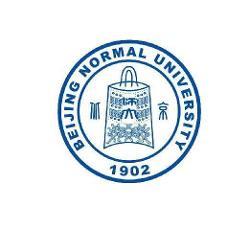廖夏伟,环境和可持续发展专家。牛津大学地理与环境系博士。于北京大学深圳研究生院环境与能源学院完成博士后研究工作,曾任世界银行北京办公室水资源专家,并为非洲发展银行、联合国气候总署全球适应委员会等提供咨询服务。现任北京师范大学湾区国际商学院特聘副研究员(青年英才),并担任学术促进委员会主任和发展战略部部长,分管学院下设六个研究中心的工作。
廖夏伟博士的主要研究领域包括可持续发展、环境与自然资源管理和政策、低碳经济和发展、水资源管理、能源政策、绿色和低碳投资等,于Global Climate Change, Applied Energy, Journal of Environmental Management, Journal of Cleaner Production等顶级期刊发表文章30余篇,其中一作和通讯作者20余篇,著有《中国电力行业水资源管理》一书,并作为主要作者主持或参与世界银行报告十余部。
教育背景:
2014-2018 牛津大学 地理与环境系 博士
2017-2018 麻省理工学院 全球环境变化中心 访问研究员
2011-2014 北京大学 环境科学与工程系 硕士
2012-2014 早稻田大学 环境与能源工程系 硕士
2007-2011 华东师范大学 资源与环境科学系 学士
2008-2011 华东师范大学 经济系 学士(辅修)
科学研究
研究成果:
发表论文(SCI)
2021
1. Zhao, X. Liao, X.W. (corr author) et al. (2021) Unveiling the dynamic of water-electricity conflict within and beyond megacity boundary. Journal of Environmental Management 286: 112259.
2. Yu, M., Bai, B., Xiong, S. and Liao, X.W. (corr author) (2021) Evaluating environmental impacts and economic performance of remanufacturing electric vehicle lithium-ion batteries. Journal of Cleaner Production. 321: 128935.
3. Liao, X.W., et al. (2021) Optimizing future electric power sector considering water-carbon policies in the water-scarce North China Grid. Science of the Total Environment. 768: 144965.
4. Liao, X.W., et al. (2021) Water shortage risks for China's coal power plants under climate change. Environmental Research Letters 107989.
5. Liao, X.W., et al. (2021) Income impacts on household consumption’s grey water footprint in China. Science of the Total Environment 755: 142584.
6. Liao, X.W., et al. (2021) Unveiling economic co-benefits of virtual water trades: an empirical analysis on China’s JingJinJi megalopolis. Water 13(21), 3140.
2020
7. Liao, X.W., et al. (2020) Quantifying urban wastewater treatment sector’s greenhouse gas emissions using a hybrid life cycle analysis method – An application on Shenzhen city in China. Science of the Total Environment 745: 141176.
8. Han, A., Chai, L. and Liao, X. (corr author) (2020) Demographic scenarios of future environmental footprints of healthy diets in China. Foods 9(8): 1021.
9. Liao, X.W., et al. (2020) Comparing water footprint and water scarcity footprint of energy demand in China’s six megacities. Applied Energy 269, 115137.
10. Liu, L., et al., Liao, X.W. (corr author) (2020) Water-carbon trade-off for inter-provincial electricity transmissions in China. Journal of Environmental Management 268, 110719.
11. Ming, J., Liao, X.W. (corr author) and Zhao, X. (2020) Grey water footprint for global energy demands. Frontiers of Earth Science 14: 201-208.
12. Zhao, X.X., Zhao, X., Li, R.S., Mao, G.Q., Tillotson, MR., Liao, XW., Zhang, C. and Yi. YJ (2020) Evaluating the vulnerability of physical and virtual water resource networks in China’s megacities. Resources Conservation and Recycling. 161: 104972.
13. Han, A., et al. and Liao, X.W. (2020) Are the Chinese moving toward a healthy diet? Evidence from macro data from 1961-2017. International Journal of Environmental Research and Public Health. 17: 5294.
14. Li, M., Ye, H., Liao, X.W., Ji, J. and Ma. X. (2020) How Shenzhen, China pioneered the widespread adoption of electric vehicles in a major city: Implications for global implementation. WIREs Energy and Environment. e373.
2019
15. Liao, X.W. et al. (2019) Grey water footprint and interprovincial virtual grey water transfers for China’s final electricity demands. Journal of Cleaner Production 227: 111-118.
16. Liao, X.W. et al. (2019) Inter-provincial electricity transmissions’ co-benefit of national water savings in China. Journal of Cleaner Production 229: 350-357.
17. Liao, X.W. et al. (2019) Life-cycle water uses for energy consumption of Chinese households from 2002 to 2015. Journal of Environmental Management 231: 989-995.
18. Liao, X.W. et al. (2019) Water footprint of the energy sector in China’s two megalopolises. Ecological Modelling 391: 9-15.
19. Liao, X.W. and Ming, J (2019) Pressure imposed by energy production on compliance with China’s ‘Three Red Lines’ water policy in water-scarce provinces. Water Policy 21: 38-48.
20. Zhao, X., Liao, X.W. (corr author) et al. (2019) Accounting global grey water footprint from both consumption and production perspective. Journal of Cleaner Production 225: 963-971.
21. Zhao, X., et al. Liao, X.W. and Li, Y.P. (2019) China’s urban methane emissions from municipal wastewater treatment plant. Earth’s Future 7.
22. Barua, A., Deka, A., Gulati, V., Liao, X.W. and Qaddumi, H. (2019) Re-interpreting cooperation in transboundary waters: bringing experiences from the Brahmaputra Basin. Water. 11:2589.
2018 and before
23. Liao, X.W. et al. (2018) Water resource impacts of future electric vehicle development in China. Journal of Cleaner Production 205: 987-994.
24. Liao, X.W. and J.W. Hall (2018) Drivers of water use in China’s electric power sector from 2000 to 2015. Environmental Research Letters 13: 094010
25. Liao, X.W. et al. (2018) Categorising virtual water transfers through China’s electric power sector. Applied Energy 226: 252-260.
26. Chai, L., Liao, X.W. (corr author) et al. (2018) Assessing life cycle water use and pollution of coal-fired power generation in China using input-output analysis. Applied Energy 231: 951-958.
27. Liao, X.W. et al. (2016) Water use in China’s thermoelectric power sector. Global Environmental Change 41:142-152.
主持或参与报告
1. World Bank (under preparation) Context for cooperation: Taking Stock in the Mekong River Basin. Washington D.C.
2. World Bank (2022) Valuing Water in the construction of an Ecological Civilization. Washington D.C.
3. World Bank and AWP (2022) Valuing water: The Australia perspective – Cultural Values of Water in the Murray-Darling Basin. Washington D.C.
4. World Bank (2021) Ecological compensation in China: Trends and Opportunities for incentive-based policies towards a greener China. Washington D.C.
5. World Bank (2021) Eco-compensation in China’s evolving environment management regime: ecological protection and water pollution control in the Yangtze River Basin. Washington D.C.
6. World Bank (2021) Indonesia: the path to water security (2021) Washington D.C.
7. World Bank (2021) Grey Green Blue Continuum Valuing the Benefit of Nature-Based Solutions for Integrated Urban Flood Management in China. Washington D.C.
8. World Bank (2021) Valuing the Benefits of Nature-Based Solutions: A Manual for Integrated Urban Flood Management in China. Washington D.C.
9. World Bank (completed) Rising Tides and Sinking Futures: A Cautionary Tale of Lowland Development (completed). WB, D.C.
10. World Bank (2020) Watershed: A New Era of Water Governance in China - Thematic Reports. Washington D.C.
11. Global Commission on Adaptation (2019) Adapt Now: a global call for leadership on climate resilience. The Netherlands.
12. Caldecott, B., Bouveret, G., Dericks, G., Kruitwagen, L., Tulloch, D. and Liao, X.W. (2017) Managing the political economy frictions of closing coal in China. Smith School of Enterprise and the Environment. University of Oxford.
13. Caldecott, B., Dericks, G., Tulloch, D., Liao, X.W., Kruitwagen, L., Bouveret, G. and Mitchell, J. (2017) Stranded assets and thermal coal in China: an analysis of environment-related risk exposure. Smith School of Enterprise and the Environment. University of Oxford.



